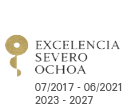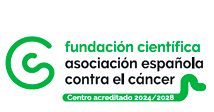2020/06/16
Blood vessels development depends on the maturation state of the pericytes that enclose them
The correct formation and architecture of vessels is essential in our organism. Alterations in vessel function are at the core of a variety of diseases. Dr. Mariona Graupera at IDIBELL, in a study participated by Arkaitz Carracedo at CIC bioGUNE, has identified a molecular cues governing pericyte maturation during vessel formation and has developed tools to study them. This new knowledge could prove important to decipher the relevance of pericyte function in health and disease. This work has been recently published in the prestigious International journal Circulation. (LINK)
Blood vessels are composed of endothelial cells, which cover the lumen of the vessels, and mural cells, that include smooth muscle cells and pericytes. Pericytes regulate vessel growth and maintenance, and pericyte dysfunction is associated with several diseases such as diabetes, vascular malformations, stroke, or cancer. "Knowing how pericytes mediate vascular development will contribute to understand their role in pathological circumstances" says Dr. Mariona Graupera, project leader at IDIBELL. The IDIBELL team has identified that PI3Kbeta regulates pericyte maturation. This finding makes PI3Kβ an ideal candidate for selective targeting of diseases caused by alterations in pericyte maturation.
New evidence to feed cancer research
The classification of pericyte function and the comprehension of the molecular mechanism that govern their maturation could aid in the understanding of the pathogenesis and progression of cancer. Non-cancerous cells that inhabit the tumor are key to the biology of cancer, and they compose the stroma. Pericytes are important component of the stroma. Yet, the impact of their abundance or function in tumor biology is only begun to emerge. According to this study, alterations in pericyte maturation could influence the aggressiveness of a tumor, a hypothesis that warrants further research.
Funding sources and collaborators
This project has been possible thanks to the funding of a Leonardo grant from the BBVA Foundation, an ITN Marie Curie predoctoral grant, a Juan de la Cierva postdoctoral grant and the support of CIBERONC and the Spanish Association for Research Against Cancer (AECC). Dr. Ralf H Adams from the Max Planck Institute, a great eminence in the field of angiogenesis, participated in this project, which was also developed with the collaboration of Dr. Arkaitz Carracedo from CIC Biogune and the University of the Basque Country (UPV / EHU).
See a large version of the first picture





